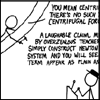| View previous topic :: View next topic |
| Author |
Message |
theSeeker
Joined: 18 Jun 2004
|
 Posted: Tue Mar 08, 2005 3:33 am Post subject: teaching how to WRITE SENTENCES that make sense. Posted: Tue Mar 08, 2005 3:33 am Post subject: teaching how to WRITE SENTENCES that make sense. |
 |
|
I am teaching essay writing currently in Korea. I have been teaching essay form and structure (introduction, thesis sentence, body, conclusion etc. etc.). students' essay structure is improving, but they have TERRIBLE grammar. This is a TOEFL prep class. Some of their sentences are hard to understand. How can i practice sentence structure with them? any ideas? i have been grading them on their essay structure, but am now looking more at their sentence structure.
any ideas?? |
|
| Back to top |
|
 |
d503

Joined: 16 Oct 2004
Location: Daecheong, Seoul
|
 Posted: Tue Mar 08, 2005 3:44 am Post subject: Posted: Tue Mar 08, 2005 3:44 am Post subject: |
 |
|
| I find a good way to help kids with poor grammar is to actually listen to what they write. My classes aren't all that advanced but they can generally tell when my sentence isn't correct once it is read out loud (provided I am somewhat in their range of vocab and the like). There is something about seeing it on paper that you just miss those errors. Oral revision is also a great way to proof any paper. I would suggest having the kids prepare a short paragraph on some topic, and them have them read it out loud the next class time. If they are big class a few kids at a time. See if they can point out errors, and help them if they miss any. |
|
| Back to top |
|
 |
peppermint

Joined: 13 May 2003
Location: traversing the minefields of caddishness.
|
 Posted: Tue Mar 08, 2005 4:23 am Post subject: Posted: Tue Mar 08, 2005 4:23 am Post subject: |
 |
|
Korean word order is very very different than English. My rule of thumb was to tell my students to write it so it sounds awful to them  ( same rule I follow when trying to put togehter a Korean sentence) When I taught essay writing I found that caused most of the trouble within a sentance. ( same rule I follow when trying to put togehter a Korean sentence) When I taught essay writing I found that caused most of the trouble within a sentance.
if you want to go serious, teach them the basics of word order ( subject verb object- that kind of thing) they might not like it much unless you make it into a sort of game- put words on paper and have them move them around or something.
http://www.ego4u.com/en/cram-up/grammar/word-order
this should give you a place to start from. |
|
| Back to top |
|
 |
Universalis

Joined: 17 Nov 2003
Location: Seoul
|
 Posted: Tue Mar 08, 2005 4:56 am Post subject: Posted: Tue Mar 08, 2005 4:56 am Post subject: |
 |
|
I know what you're talking about... teaching writing can be very frustrating because with writing, you can see how English grammar arranges itself right in front of you, yet the students rarely seem to "get" it.
As others have pointed out... you really need to go back and start with the basics. Start with simple sentence structures (a single SV combination) and go from there. Have them write short essays and tell them to keep it simple, because part of the problem is that they try to do too much with their writing. I found writing about their family is a good way to start, as it's possible to describe people with some very basic grammar.
Good luck,
Brian |
|
| Back to top |
|
 |
dulouz
Joined: 04 Feb 2003
Location: Uranus
|
 Posted: Tue Mar 08, 2005 5:09 am Post subject: Posted: Tue Mar 08, 2005 5:09 am Post subject: |
 |
|
I think you might have a big problem. If they don't know already, you have to tell them in Korean. After that you get to do lots of exercises that you have to plan ahead for.
The -noun- is -adjective-
The -noun- is -adjective- and -adjective-.
The -noun- is -adjective, -adjective- and -adjective-.
etc... |
|
| Back to top |
|
 |
ajuma

Joined: 18 Feb 2003
Location: Anywere but Seoul!!
|
 Posted: Wed Mar 09, 2005 6:21 am Post subject: Posted: Wed Mar 09, 2005 6:21 am Post subject: |
 |
|
I start every writing class with a simple "make the sentence longer" exercise.
Take the sentence "The boy ran."
Add an adjective to boy...."handsome"
"The handsome boy ran."
Add an adverb to ran...."quickly"
"The handsome boy ran quickly."
Add a prepositional phrase..."to the bathroom"
"The handsome boy ran quickly to the bathroom."
Add another adjective to bathroom...."cold"
"The handsome boy ran quicly to the cold bathroom."
This teachs them word order and structure!!
Have them practice a few in class, then assign a few for homework. Don't be suprised by the sentence "The boy ate deliciously in the restaurant!" There isn't an adverb in English that says what they mean in Korean! |
|
| Back to top |
|
 |
superhal
Joined: 25 Feb 2005
|
 Posted: Wed Mar 09, 2005 9:58 am Post subject: Posted: Wed Mar 09, 2005 9:58 am Post subject: |
 |
|
its an age old question that nobody has a definitive answer to.
for beginners, i sometimes use that strategy about having them try to match their writing with their speaking. this does not mean their speaking is acceptable either, but i'm trying to get them to think about writing like language, not math.
for higher level students (who are relatively fluent) i use VanPatten's Input Processing theory. See Lee & VanPatten's "Making Communicative Language Teaching Happen" (v.2, 2000; 1996.) the basic idea is that students are drawn towards certain strategies that are bad for learning grammar, and you need to teach them away from those and towards strategies that get them to learn the structure.
some tips from IP:
1. make sure they fully understand the meaning of whatever they are doing. if they don't, they won't have enough mental resources available to process structure.
2. the structure should be presented in such a way that only the structure carries the meaning. e.g. they should not be able to figure out the meaning by ignoring the structure and only looking at the vocabulary.
3. examples of one structure should be in groups of 4 or more.
4. rules of use (this is used in this situation) are better than rules of form (this is made like this).
5. to get the students to acquire the structure, they need to test the rule against the input rather than just accept the rule as the truth. The best way to do this is to get the students to come up with their own rule (in korean is fine) and check for themselves if it works. they can even share it with each other, but they have to check it. it also seems that if the teacher gives a rule of use and they check it, it works.
So far, the results are pretty dramatic:
Cadierno and VanPatten, 1993
VanPatten and Oikkennon, 1996
VanPatten and Sanz, 1999.
My MA thesis is on a different method of using IP in the classroom, hopefully once it's published i can send along the info. |
|
| Back to top |
|
 |
fusionbarnone
Joined: 31 May 2004
|
 Posted: Fri Mar 11, 2005 5:03 pm Post subject: Posted: Fri Mar 11, 2005 5:03 pm Post subject: |
 |
|
Peppermint. That was the BEST piece of advice I've ever heard. Talk about innovative problem solving.
I hope your employer is paying you handsomely? |
|
| Back to top |
|
 |
Derrek
Joined: 15 Jan 2003
|
 Posted: Fri Mar 11, 2005 6:16 pm Post subject: Posted: Fri Mar 11, 2005 6:16 pm Post subject: |
 |
|
| Good link, Pep. I will use it. |
|
| Back to top |
|
 |
|

